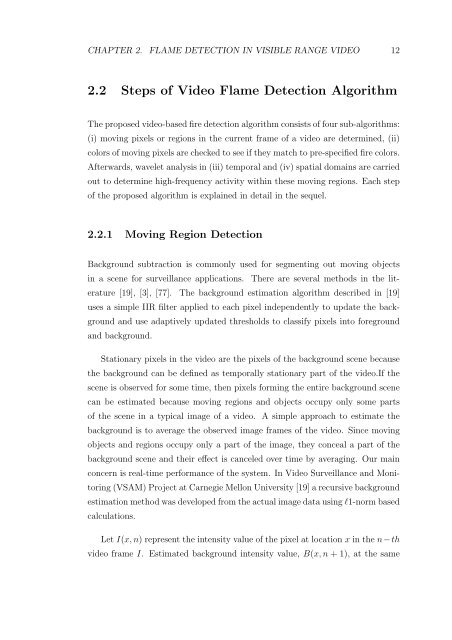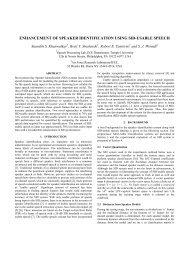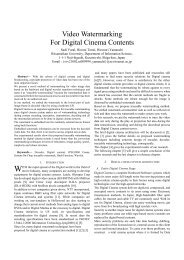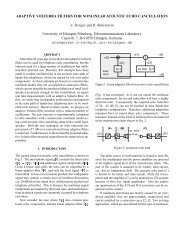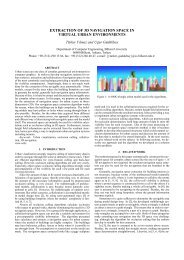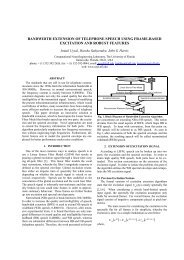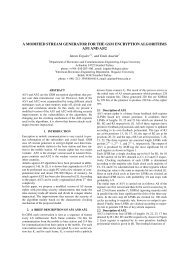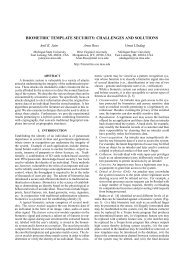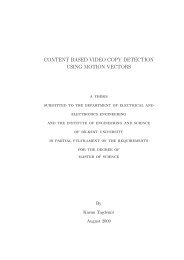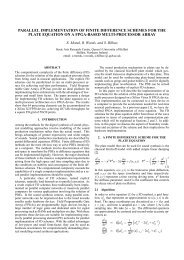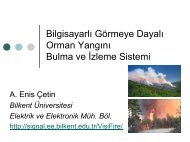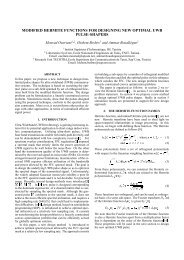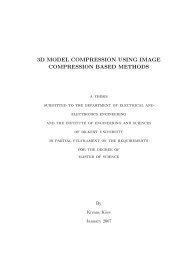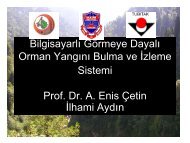Fire Detection Algorithms Using Multimodal ... - Bilkent University
Fire Detection Algorithms Using Multimodal ... - Bilkent University
Fire Detection Algorithms Using Multimodal ... - Bilkent University
Create successful ePaper yourself
Turn your PDF publications into a flip-book with our unique Google optimized e-Paper software.
CHAPTER 2. FLAME DETECTION IN VISIBLE RANGE VIDEO 12<br />
2.2 Steps of Video Flame <strong>Detection</strong> Algorithm<br />
The proposed video-based fire detection algorithm consists of four sub-algorithms:<br />
(i) moving pixels or regions in the current frame of a video are determined, (ii)<br />
colors of moving pixels are checked to see if they match to pre-specified fire colors.<br />
Afterwards, wavelet analysis in (iii) temporal and (iv) spatial domains are carried<br />
out to determine high-frequency activity within these moving regions. Each step<br />
of the proposed algorithm is explained in detail in the sequel.<br />
2.2.1 Moving Region <strong>Detection</strong><br />
Background subtraction is commonly used for segmenting out moving objects<br />
in a scene for surveillance applications. There are several methods in the literature<br />
[19], [3], [77]. The background estimation algorithm described in [19]<br />
uses a simple IIR filter applied to each pixel independently to update the background<br />
and use adaptively updated thresholds to classify pixels into foreground<br />
and background.<br />
Stationary pixels in the video are the pixels of the background scene because<br />
the background can be defined as temporally stationary part of the video.If the<br />
scene is observed for some time, then pixels forming the entire background scene<br />
can be estimated because moving regions and objects occupy only some parts<br />
of the scene in a typical image of a video. A simple approach to estimate the<br />
background is to average the observed image frames of the video. Since moving<br />
objects and regions occupy only a part of the image, they conceal a part of the<br />
background scene and their effect is canceled over time by averaging. Our main<br />
concern is real-time performance of the system. In Video Surveillance and Monitoring<br />
(VSAM) Project at Carnegie Mellon <strong>University</strong> [19] a recursive background<br />
estimation method was developed from the actual image data using l1-norm based<br />
calculations.<br />
Let I(x, n) represent the intensity value of the pixel at location x in the n−th<br />
video frame I. Estimated background intensity value, B(x, n + 1), at the same


